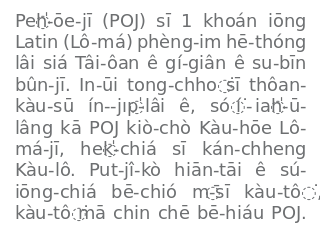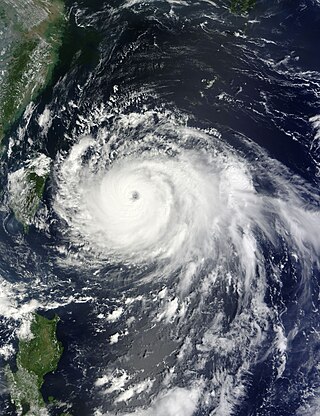
Hanyu Pinyin, often shortened to just pinyin, is the official romanization system for Standard Mandarin Chinese in China, and to some extent, in Singapore and Malaysia. It is often used to teach Mandarin, normally written in Chinese form, to learners already familiar with the Latin alphabet. The system includes four diacritics denoting tones, but pinyin without tone marks is used to spell Chinese names and words in languages written in the Latin script, and is also used in certain computer input methods to enter Chinese characters. The word Hànyǔ literally means "Han language", while Pīnyīn (拼音) means "spelled sounds".

Standard Chinese is a modern standardized form of Mandarin Chinese that was first developed during the Republican Era (1912‒1949). It is designated as the official language of mainland China and a major language in the United Nations, Singapore, and Taiwan. It is largely based on the Beijing dialect. Standard Chinese is a pluricentric language with local standards in mainland China, Taiwan and Singapore that mainly differ in their lexicon. Hong Kong written Chinese, used for formal written communication in Hong Kong and Macau, is a form of Standard Chinese that is read aloud with the Cantonese reading of characters.

Hakka forms a language group of varieties of Chinese, spoken natively by the Hakka people throughout Southern China and Taiwan and throughout the diaspora areas of East Asia, Southeast Asia and in overseas Chinese communities around the world.

Romanization or romanisation, in linguistics, is the conversion of text from a different writing system to the Roman (Latin) script, or a system for doing so. Methods of romanization include transliteration, for representing written text, and transcription, for representing the spoken word, and combinations of both. Transcription methods can be subdivided into phonemic transcription, which records the phonemes or units of semantic meaning in speech, and more strict phonetic transcription, which records speech sounds with precision.

Southern Min, Minnan or Banlam, is a group of linguistically similar and historically related Sinitic languages that form a branch of Min Chinese spoken in Fujian, most of Taiwan, Eastern Guangdong, Hainan, and Southern Zhejiang. The Minnan dialects are also spoken by descendants of emigrants from these areas in diaspora, most notably in Southeast Asia, such as Singapore, Malaysia, the Philippines, Indonesia, Brunei, Southern Thailand, Myanmar, Cambodia, Southern and Central Vietnam, San Francisco, Los Angeles and New York City. It is the most populous branch of Min Chinese, spoken by an estimated 48 million people in c. 2017–2018.

The provincial level administrative divisions are the highest-level administrative divisions of China. There are 34 such divisions claimed by the People's Republic of China, classified as 23 provinces, five autonomous regions, four municipalities and two special administrative regions. The political status of Taiwan Province along with a small fraction of Fujian Province remain in dispute; those are under separate rule by the Republic of China, which is usually referred to as "Taiwan".

Shantou, alternately romanized as Swatow and sometimes known as Santow, is a prefecture-level city on the eastern coast of Guangdong, China, with a total population of 5,502,031 as of the 2020 census and an administrative area of 2,248.39 square kilometres (868.11 sq mi). However, its built-up area is much bigger with 12,543,024 inhabitants including Rongcheng and Jiedong districts, Jiexi county and Puning city in Jieyang plus all of Chaozhou city largely conurbated. This is de facto the 5th built-up area in mainland China between Hangzhou-Shaoxing, Xian-Xianyang and Tianjin.

Postal romanization was a system of transliterating Chinese place names developed by postal authorities in the late 19th and early 20th centuries. For many cities, the corresponding postal romanization was the most common English-language form of the city's name from the 1890s until the 1980s, when postal romanization was replaced by pinyin, but the system remained in place on Taiwan until 2002.
Taishanese, alternatively romanized in Cantonese as Toishanese or Toisanese, in local dialect as Hoisanese or Hoisan-wa, is a variety of Yue Chinese native to Taishan, Guangdong. Although it is related to Cantonese, Taishanese has little mutual intelligibility with the latter. Taishanese is also spoken throughout Sze Yup, located on the western fringe of the Pearl River Delta in Guangdong China. In the late 19th century and early 20th century, most of the Chinese emigration to North America originated from Sze Yup, the area where this variety is natively spoken. Thus, up to the mid-20th century, Taishanese was the dominant variety of the Chinese language spoken in Chinatowns in Canada and the United States. It was formerly the lingua franca of the overseas Chinese residing in the United States.

Beihai is a prefecture-level city in the south of Guangxi, People's Republic of China. Its status as a seaport on the north shore of the Gulf of Tonkin has granted it historical importance as a port of international trade for Guangxi, Hunan, Hubei, Sichuan, Guizhou, and Yunnan. Between the years 2006 and 2020, Beihai is predicted to be the world's fastest growing city. Beihai has a large shipyard, but most of the money generated in the city is derived from trade.

Zhangzhou is a prefecture-level city in Fujian Province, China. The prefecture around the city proper comprises the southeast corner of the province, facing the Taiwan Strait and surrounding the prefecture of Xiamen.

Foshan, alternately romanized as Fatshan, is a prefecture-level city in central Guangdong Province, China. The entire prefecture covers 3,848 km2 (1,486 sq mi) and had a population of 9,498,863 as of the 2020 census. The city is part of the western side of the Pearl River Delta Economic Zone whose built-up area was home to 65,694,622 inhabitants as of 2020, making it the biggest urban area of the world.

Cantonese is a language within the Chinese (Sinitic) branch of the Sino-Tibetan languages originating from the city of Guangzhou and its surrounding area in Southeastern China. It is the traditional prestige variety of the Yue Chinese dialect group, which has over 80 million native speakers. While the term Cantonese specifically refers to the prestige variety, it is often used to refer to the entire Yue subgroup of Chinese, including related but largely mutually unintelligible languages and dialects such as Taishanese.

Heshan, formerly romanized as Hokshan, is a county-level city of Jiangmen City in the southern part of Guangdong Province, China with a total land area of 1,081 square kilometres (417 sq mi) and a population of 530,684 inhabitants as of 2020 census and some 200,000 internal migrants. The city is now being conurbated with Jiangmen and so included in the Guangzhou-Shenzhen Pearl River conurbation with more than 65,57 million inhabitants. There are approximately 360,000 people of Heshan origin or descent living in other parts of the world, particularly in the Americas such as Chile, Peru and the United States.

Pe̍h-ōe-jī, also sometimes known as the Church Romanization, is an orthography used to write variants of Southern Min Chinese, particularly Taiwanese and Amoy Hokkien.

The languages of Taiwan consist of several varieties of languages under the families of Austronesian languages and Sino-Tibetan languages. The Formosan languages, a branch of Austronesian languages, have been spoken by the Taiwanese indigenous peoples for thousands of years. Owing to the wide internal variety of the Formosan languages, research on historical linguistics recognizes Taiwan as the Urheimat (homeland) of the whole Austronesian languages family. In the last 400 years, several waves of Han emigrations brought several different Sinitic languages into Taiwan. These languages include Taiwanese Hokkien, Hakka, and Mandarin, which have become the major languages spoken in present-day Taiwan.
There are many romanization systems used in Taiwan. The first Chinese language romanization system in Taiwan, Pe̍h-ōe-jī, was developed for Taiwanese by Presbyterian missionaries and promoted by the indigenous Presbyterian Churches since the 19th century. Pe̍h-ōe-jī is also the first written system of Taiwanese Hokkien; a similar system for Hakka was also developed at that time. During the period of Japanese rule, the promotion of roman writing systems was suppressed under the Dōka and Kōminka policy. After World War II, Taiwan was handed over from Japan to China in 1945. The romanization of Mandarin Chinese was also introduced to Taiwan as official or semi-official standard.

Typhoon Fanapi, known in the Philippines as Typhoon Inday, was a damaging and deadly typhoon that struck Taiwan and southeastern China in September 2010. It was the eleventh tropical storm and fourth typhoon of the very inactive season. The storm formed on September 14 east of the Philippines and moved slowly for several days, initially to the northwest, then curving to the northeast before turning westward due to a ridge to the north. During this time, Fanapi intensified to reach 10 minute maximum sustained winds of 175 km/h (110 mph). Fanapi made its first landfall on September 19 over Hualien, Taiwan, becoming the first typhoon to hit the island since Typhoon Morakot in August 2009. Later that day made a final landfall in Fujian, China. The storm dissipated on September 21 over southern China.
The Hakka Bible: Today's Taiwan Hakka Version (TTHV), is the most recent revised Hakka language translation of the Bible used by Hakka Protestants in Taiwan and overseas Hakka communities. Work on the translation commenced in 1984 with the TTHV New Testament & Psalms completed in 1993, Proverbs was published separately in 1995. The entire Bible was made available on April 11, 2012 at the Presbyterian Church in Taiwan's annual General Assembly meeting. An ecumenical dedication and thanksgiving ceremony was held on April 22, 2012 at the National Chiao Tung University in Hsinchu with over 1,200 Hakka Christians in attendance.
Zhan is the pinyin romanization of several Chinese names, also spelled Chan in the Wade–Giles system common in Taiwan and in older publications
















